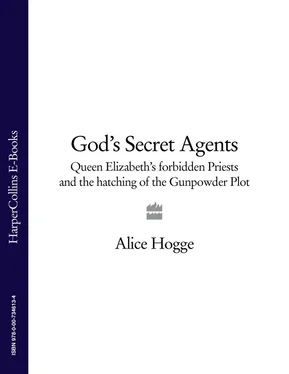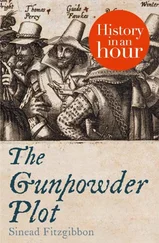They did not have long to wait. On 8 May 1559 Elizabeth dissolved the first Parliament of her reign, giving royal assent to those acts from which her new Church would take its shape: the Act of Supremacy, which settled on Elizabeth the title of Supreme Governor of that Church, and the Act of Uniformity, which agreed the doctrine it should follow.
The reactions followed swiftly. ‘A leaden mediocrity,’ wrote the newly returned Protestant, John Jewel. ‘The Papacy was never abolished…but rather transferred to the sovereign,’ wrote Theodore Béza in Geneva to Heinrich Bullinger in Zurich. From the first, Elizabeth’s was a Protestant settlement that failed to please the Protestants. But neither did it please the Catholics. ‘Religion here now is simply a question of policy’, wrote the Bishop of Aquila from London, ‘and in a hundred thousand ways they let us see that they neither love us nor fear us.’ John Jewel expressed his surprise that ‘the ranks of the papists have fallen almost of their own accord’, and Count de Feria wrote sadly home to Spain to explain why: ‘The Catholics are in a great majority in the country, and if the leading men in it were not of so small account things would have turned out differently.’ *And in London a zealous mob went on the rampage, stripping the capital’s churches of their statues and stained-glass windows ‘as if it had been the sacking of some hostile city’. 20
From the start Elizabeth’s religious settlement was a compromise. Like all compromises it failed to satisfy anyone and like all compromises it would be subjected to stresses and strains as each dissatisfied party tried, in turn, to wrest back the advantage. But it is the fact that there was need for a compromise that is of significance to this story, because it suggests a country divided into pressure groups of equal fighting weight.
The religious changes of the English Reformation, so decisive and so devastating for a select few in key positions of authority, had filtered slowly through the rest of the country, dependent upon the efficiency and willingness of those officers charged with their enforcement. By 1558 England’s religious spectrum was a kaleidoscope of colours ranging all the way from the most Roman of purples to Puritan grey. It is impossible to estimate the precise number of confirmed Catholics and Protestants, together with the number of relative indifferents, in England at Elizabeth’s succession. It is equally impossible to arrive at a precise and consistent definition for English Catholicism or English Protestantism at this time: these were not hermetic terms upon which everyone could agree and with which everyone could identify. Indeed it is unlikely that everyone could have told you what they were, Catholic or Protestant, if questioned. It is highly probable that in reaching a compromise settlement the Government paid close attention to the predictable response of the powerful and predatory Catholic nations of Europe. But it is certain that such a compromise would not have been necessary had England not been divided, top to bottom, on this matter of religion. The England Elizabeth inherited was definitely not a Protestant country.
For every Londoner in the largely pro-Protestant capital who went on a spree of vandalism, there was someone else in the shires and villages quietly secreting away the statues, crucifixes and church plate for happier times. For anyone in the south of England—and close to the seat of government—prepared to toe the party line if it led to promotion, there was someone else in the north of the country and far from influence, stubbornly doing as he pleased. For anyone whose heart belonged to Geneva and who felt they had been betrayed by the Queen, there was another whose heart belonged to Rome, who was smarting just as badly. And for Elizabeth, whose heart belonged firmly to England, the challenge lay in holding these two opposing forces in their precarious balance long enough to allow civil divisions to heal over and to effect the urgently needed overhaul of the country’s economy and the repair of its diplomatic relations with the rest of Europe. Because the twenty-five-year-old Queen can have been in little doubt that, as far as Europe was concerned, she and England were in for a turbulent future.
And for the ordinary man and woman in the street, the challenge lay in working out precisely what was required of them by this latest change to the national religion.
On the face of it these requirements were simple. The new Act of Uniformity demanded each subject’s presence at their parish church every Sunday and holy day. Failure to do so, without reasonable excuse, would result in a twelve pence fine for each offence, or the ‘censure of the church’ and possible excommunication, with the consequent loss of civil rights.
Going to church on a Sunday had long been a tradition inspired by faith but enforced by the ecclesiastical courts and over the centuries the machinery of that enforcement had become powerfully efficient: the long arm of the Church’s law reached the full length and breadth of England. It was this machinery, in place, fully operational and re-greased with parliamentary drive in place of holy oil, that Elizabeth’s ministers now used to unseat the religion that had devised it: the Catholic Church in England was hoist with its own petard.
There were other requirements too. Subjects were not to speak in a derogatory fashion about the new Prayer Book, nor to cause a clergyman to use any other form of weekly liturgy than the one specified by the Queen’s officers. The penalties for this were fines of 100, then 400 marks, and, thereafter, life imprisonment. And they were not to be caught defending the papal supremacy; not unless they were prepared to forfeit first their goods, then their liberty, then their life.
But so long as they kept their weekly appointment at the Queen’s new Church and their mouths tightly shut, there was nothing to stop them benefiting from Elizabeth’s lenient attitude towards Catholicism. And this was lenience rather than a move towards outright religious tolerance—a lenience born of political realism. There was no question that Elizabeth wanted to eliminate the Catholic Church in England. There were few, if any, sixteenth century monarchs who could afford to tolerate so strong a rival within their own dominions and Elizabeth’s crown was more vulnerable than most. But realistically this was not going to happen overnight. So the Oath of Supremacy was tendered to all office holders. Anyone who could not swear ‘that the queen is the only supreme governor of this realm…as well in all spiritual or ecclesiastical things…as temporal’ was evicted from that office and denied any further position in the new administration, but elsewhere Elizabeth’s behaviour remained conciliatory. 21
Deleted from the new Prayer Book was the offensive Edwardian reference to ‘the tyranny of the Bishop of Rome’. The new Communion service became a careful amalgam of phrases from successive earlier prayer books. It was a mouthful to say—‘The body of our Lord Jesus Christ, which was given for thee, preserve thy body and soul into everlasting life: and take and eat this in remembrance that Christ died for thee, and feed on him in thine heart by faith, with thanksgiving’—but it remained sufficiently ambiguous to satisfy both those who believed in the real presence in the sacrament and those who denied it. Churchgoers seeking the Virgin Mary were offered a newer and more vital virgin to adore: ‘they keep the birthday of queen Elizabeth in the most solemn way on the 7th day of September, which is the eve of the feast of the Mother of God’, wrote the Catholic Edward Rishton. And although the churches were stripped of their decoration, they still hung on to ‘the organs, the ecclesiastical chants, the crucifix, copes, [and] candles’. Rishton observed: ‘The queen retained many of the ancient customs and ceremonies…partly for the honour and illustration of this new church, and partly for the sake of persuading her own subjects and foreigners into the belief that she was not far…from the Catholic faith.’ It convinced the French ambassador. He wrote home, duly impressed, that the English ‘were in religion very nigh to them’. And, Rishton added, ‘the Queen and her ministers considered themselves most fortunate in that those who clung to…[Catholicism]…publicly accepted, or by their presence outwardly sanctioned, in some way, the new rites they had prescribed. They did not care so much about the inward belief of these men.’ No one, it seemed, was keen to start opening windows into men’s souls at the beginning of Elizabeth’s reign. 22
Читать дальше












